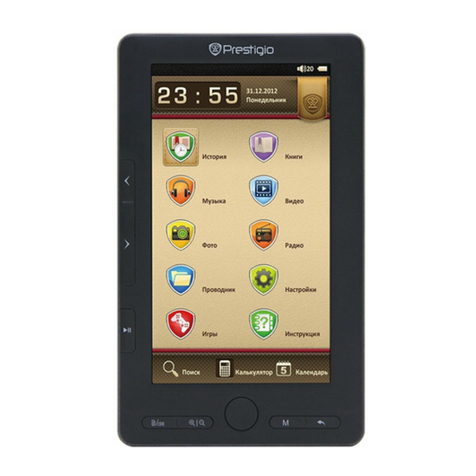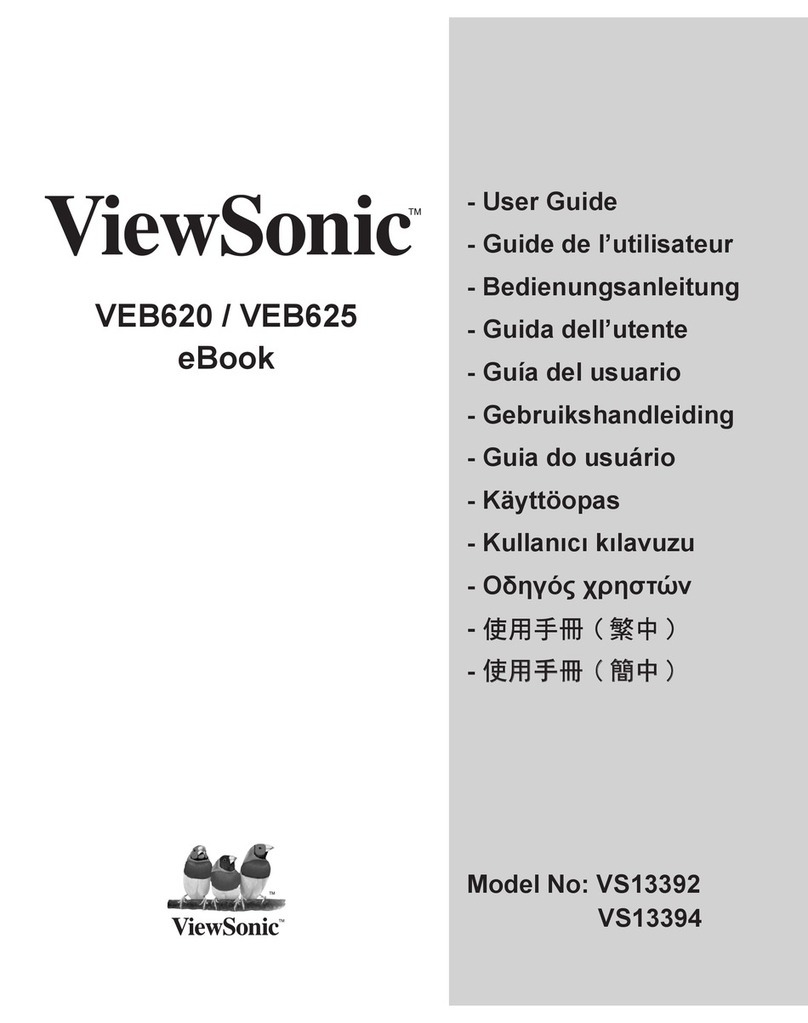TECH FASS APS mini MRE 73 Series User manual

MREx 73
APS mini Plus reader modules
User’s guide
©2004 –2019, TECH FASS s.r.o., Věštínská 1611/19, 153 00 Prague, Czech Republic, www.techfass.cz, techfass@techfass.cz
(Date of release: 2019/06/03, valid for FW version 5.12)

All brand or product names are or may be trademarks of, and are used to identify products and services of, their
respective owners.
1 Content
1Content.......................................................................................................................2
2Product description.....................................................................................................3
2.1 MREM 73 reader module.....................................................................................3
2.2 MRED 73 reader module .....................................................................................3
2.3 MREP 73 reader module......................................................................................3
3Technical parameters.................................................................................................4
3.1 Product version....................................................................................................4
3.2 Technical features................................................................................................5
3.3 Special accessories.............................................................................................5
3.4 Using WIO 22 module for remote output control ..................................................6
3.5 Mechanical design...............................................................................................6
4Installation..................................................................................................................6
4.1 Wiring description ................................................................................................6
4.2 Standard connection............................................................................................7
4.3 LED Indicators.....................................................................................................7
4.4 Installation instructions.........................................................................................7
4.5 Mounting and removal the module.......................................................................8
5Setting parameters of the reader module....................................................................9
5.1 Configurable parameters......................................................................................9
5.2 Reader module parameters setting......................................................................9
6Reader module functioning.......................................................................................10
6.1 “Door Open” function description .......................................................................10
6.2 Function permanent door lock release according to a time schedule.................10
6.3 Alarm states.......................................................................................................11
6.4 Standard operating modes.................................................................................12
6.5 Read ID media format........................................................................................12
6.6 Wiegand interface configuration.........................................................................12
6.7 Keypad function.................................................................................................14
6.8 Programming mode ...........................................................................................15
6.9 ID expiration function.........................................................................................19
6.10 ID with Alarm flag function .................................................................................20
6.11 Antipassback function........................................................................................20
6.12 Duress PIN ........................................................................................................21
6.13 Disabling function ..............................................................................................21
6.14 Reading synchronization....................................................................................21
6.15 Online authorization...........................................................................................21
7Simplified access rights evaluation...........................................................................22
8Placing a magnet for tearing-off indication................................................................23
9Useful links...............................................................................................................23

2 Product description
The MREx 73 1) reader modules (125 kHz readers with an
embedded single door controller) are designed for connection
to the RS 485 bus of the APS mini Plus access control system,
or for standalone operation. It is possible to connect up to 32
reader modules to a single line of the APS mini Plus system.
In effect the number of lines is not limited.
The reader module is available in various modifications
differing in the way of use.
2.1 MREM 73 reader module
Standard reader module for the APS mini Plus system; the
user’s identity is verified by reading an ID media (Pic.1).
2.2 MRED 73 reader module
Reader module with a reason keypad (Pic.2); the user may
enter an operation code by pressing a key, e.g. a reason to
leave the building. The module is designed mainly for T&A
applications.
2.3 MREP 73 reader module
Reader module with a PIN keypad
(Pic.3); uses the combination of ID media and a PIN code for
user identification.
1) Commercial designation of available versions is described in table 1.
Pic. 2: MRED 73
Pic. 1: MREM 73
Pic. 3: MREP 73

Page 4
3 Technical parameters
3.1 Product version
Product version
Product designation
Keypad
layout
Catalogue
number
Module features 2)
TF
EM
MREM 73 –TF
N/A
53473000
✓
MRED 73 –TF
Reason keypad
53473200
✓
MREP 73 –TF
PIN keypad
53473400
✓
MREM 73 –EM
N/A
53473001
✓
✓
MRED 73 –EM
Reason keypad
53473201
✓
✓
MREP 73 –EM
PIN keypad
53473401
✓
✓
Table 1: Product version
2) TF –TECHFASS factory 125 kHz ID media reading; EM –125 kHz ID media reading;

Page 5
3.2 Technical features
Technical features
Supply voltage
8 ÷15 VDC
Current demand
Typical
80 mA
Maximal
120 mA
Keypad layout
MREM 73
No keypad
MRED 73
Reason keypad, 16 keys
MREP 73
PIN keypad, 16 keys
ID technology,
typical reading range
EM Marin
8 cm (with ISO card)
Real-time clock
Yes, with 24 hrs. back-up
Memory
Cards
2,000 ID, 2 programming cards
Events
3,400
Time schedules
64
Inputs
1st input
Logical potential-free contact
2nd input
Logical potential-free contact
Outputs
Door lock
Relay NC/NO, 2A/24V
Alarm
Transistor output 5V/5mA
I/O Port
External device
Ext. tamper / ext. reader buzzer control /
module disable function / reading
synchronization MASTER/SLAVE modes
Indicators
3x LED
1x PIEZO
Tamper protection
Reed contact
Communication interface
RS 485
Alternative data input / output
WIEGAND (configurable)
Table 2: Technical features
3.3 Special accessories
Accessories
MAG
51900200
Magnet for reed contact
WIO 22
51901200
Remote control module, 2x relay
Table 3: Special accessories

Page 6
3.4 Using WIO 22 module for remote output control
The WIO 22 remote control WIEGAND relay module is designated for secure output control
of APS system reader modules. The door open or other functions can be controlled from the
module located inside the secure area, while the reader module can be located in the non-
secure area.
The module is controlled by WIEGAND signal directly from the reader module working in
standard operating mode. Themodule must be paired with appropriate reader module before
use.
3.5 Mechanical design
Mechanical design
Weight
0.25 kg
Operating temperature
-25 ÷ 60 °C
Humidity
Max 95%, non-condensing
Housing
MREM 73
IP 54, IK 07
MRED 73, MREP 73
IP 52
Pigtail
0.5 m
Color
Light grey
Dimensions
105x90x20 mm
Table 4: Mechanical design
4 Installation
4.1 Wiring description
Wiring description
Color
Function
Color
Function
Red
Power sup. +8 ÷+15 VDC
Green white
WIEGAND data 0
Red blue
Power sup. +8 ÷+15 VDC
Brown green
WIEGAND data 1
Green
I/O Port 3
Yellow
Input 1 (IN1)
Blue
GND (0 V)
Grey
Input 2 (IN2)
Black
A wire - RS 485 line
Violet
NO relay contact
White
B wire - RS 485 line
Brown
C relay contact
Pink
Alarm output (AUX)
Grey pink
NC relay contact
Table 5: Wiring description

Page 7
4.2 Standard connection
Connection
Input 1
Door contact, active when door closed; REX button
Input 2
Request to exit button or handle contact; Tamper; Disabling function;
active on 0 VDC
Output 1 (relay)
Door lock control
Alarm output
Low power transistor output (+5 V in any alarm state)
I/O Port 3
External tamper (Standard operating mode)
External reader buzzer control (op. mode with entry reader)
Disabling function
Reading synchronization: MASTER / SLAVE mode
Table 6: Standard connection
The door monitoring contact (IN1) is operational after its first change of status since
switching on the module. Full door lock timing acc. to tab. 8 is used when the door status
contact is not installed and no Forced Door and Door Ajar alarms are triggered.
4.3 LED Indicators
LED indicators
Left LED
Red
Continuously lit
Online operating mode via RS 485
Flashing with 4 s period
Offline operating mode
Fast switching with green
Address setting mode; RS 485 testing
Green
ID media reading
Right LED
Yellow
Continuously lit, flashing
Programming mode / PIN changing mode
Short flashing with 1s per.
Indicating door lock release (optional)
Green
Indicating door lock release
Table 7: LED indicators
4.4 Installation instructions
The reader module uses passive RF/ID technology, which is sensitive to RF noise sources.
Noise sources are generally of two types: radiating or conducting.
Conducted noise enters the reader via wires from the power supply or the host. Sometimes,
switching power supplies generate enough noise to cause reader malfunction, it is
recommended to use linear system power supplies.
Radiated noise is transmitted through the air. It can be caused by computer monitors or other
electrical equipment generating electromagnetic fields.
Consequently, a short distance between the reader modules themselves can cause reading
malfunctions –for correct operation it is necessary to keep a minimum distance of 50 cm.
Various metallic constructions may have a negative influence on this distance; if there are
any doubts, it is recommended to make a practical test before final mounting.
Nearby metal surfaces may cause a decrease in reading distance and speed. This is caused
by the combined effects of parasitic capacitance and conductance.

Page 8
4.5 Mounting and removal the module
First drill the fastening and cable holes, then insert the flat keypad cable into the reader
connector 1 carefully (when it is a keypad version), insert the enclosed square screw nut 2
and fasten the module on the wall, see Pic. 4 a).
It is recommended to place an installation box for connection of incoming cables on the other
side of the wall or in highly secured area (with in/out readers).
Pic. 4 a): Fastening the module on the wall
Shut the cover and lock it using enclosed screw, see Pic. 4 b).
Pic. 4 b): Swinging on and locking the cover
Removal of the module can be performed in reverse order.

Page 9
5 Setting parameters of the reader module
5.1 Configurable parameters
Configurable parameters
Parameter
Possible range
Default setting
Door lock release time
0 255 s
7 s
Door lock control setting
Direct / reverse
Direct
Door lock relay function setting
Standard / toggle / pulse
Standard
Permanent door lock release according to
a time schedule
Never / Schedule index
Never
Door lock status indication
YES / NO
NO
Acoustic signal of door lock release
YES / NO
YES
Door ajar time
0 255 s
20 s
First input configuration
Door contact / REX button
Door contact
Second input configuration
REX button / handle contact
/ tamper / disabling function
REX button
Third input / output port
Tamper / ext. buzzer signal
/ IDS status monitoring /
disabling function / reading
synchronization
Tamper
Acoustic signalization time - Tamper
0 255 s
30 s
Acoustic signalization time - Forced door
0 255 s
30 s
Acoustic signalization time –Door ajar
0 255 s
0 s
Acoustic signalization time –APB alarm
0 255 s
0 s
Signalization time –Card alarm
0 255 s
30 s
Antipassback function setting
See chapter 6.10
Disabled
Automatic summer time adjustment
YES / NO
YES
Release lock with REX button while
tamper alarm active
YES / NO
YES
Online authorization timeout
0 25500 ms
800 ms
Standalone authorization after timeout
YES / NO
YES
Saving events in
the module’s
archive
Door opened
Enabled / Disabled
Enabled
Door closed
Enabled / Disabled
Enabled
Input 2 On
Enabled / Disabled
Enabled
Input 2 Off
Enabled / Disabled
Enabled
Strike released
Enabled / Disabled
Enabled
Strike closed
Enabled / Disabled
Enabled
Table 8: Configurable parameters
5.2 Reader module parameters setting
Detailed instructions for setting reader module parameters are described in the APS Reader
configuration program user’s guide available at the address
http://www.techfass.cz/files/m_aps_miniplus_reader_en.pdf.

Page 10
6 Reader module functioning
The reader module supports the following functions:
•Standard “Door Open” function.
•Door status monitoring.
•Exit-devices contact monitoring.
•Alarm output activated / acoustic signalization activated when any alarm condition
occurs.
The “Door Open” function can be activated in 3 different ways:
•Reading a valid ID (card, key fob…).
•Pressing the exit button (according to configuration) –cannot be used in alarm
condition.
•Via communication line (program request).
6.1 “Door Open” function description
In case the standard function of the door lock relay is set, the door lock is released and the
beeper activated (when not disabled) when the “Door Open“ function is activated. Both
outputs stay active until the door is opened or the preset door lock release time has elapsed
- see configuration table.
In case the toggle function of the door lock relay is set, the door lock relay status is switched
and the beeper is activated (when not disabled) when the “Door Open” function is activated.
The beeper stays active until the door is opened or the preset door lock release time has
elapsed - see configuration table. The door lockrelay status remainsunchanged until another
“Door Open” function is activated.
In case the pulse function of the door lock relay is set, the door lock relay status is switched
for the time defined by the Pulse width parameter (ms) after the Door Open function is
activated.
In case the standard function of the door lock relay is set, reading a valid card during door
lock release resets the door lock release time.
6.2 Function permanent door lock release according to a time schedule
When the function is set, the door lock is permanently released when relevant time schedule
is valid. Reading a valid ID is standardly announced via the communication line (in online
operating mode). The forced door alarm cannot be raised when the door lock is permanently
released.
The permanent door lock release function and the toggle function of the door lock relay
are mutually exclusive.

Page 11
6.3 Alarm states
The reader module can get in following alarm states:
1) Tamper alarm
2) Forced door alarm
3) Door ajar alarm
4) Antipassback alarm (Time APB alarm, Zone APB alarm)
5) ID with Alarm flag alarm, Duress PIN alarm
Alarm state reporting is performed as follows:
•Via communication line (statuses 1, 2, 3, 4, 5)
•By acoustic signal (beeper) (statuses 1, 2, 3, 4).
•Activating the alarm output (AUX output) (statuses 1, 2, 3, 5).
Alarm signaling via communication line requires online running PC with relevant software
suitable for online operation (APS 400 nAdministrator).
Two ways of acoustic signaling is carried out:
•Steady signal (tamper).
•Intermittent signal (forced door and/or door ajar, APB alarm).
Acoustic alarm signaling is stopped after a valid ID is presented or pre-set time interval is
elapsed, see the configuration table.
If any of the relevant alarm states (with setting of the signaling timer > 0) occurs, the alarm
output is activated. It can control any alarm device directly or it can be processed further.
After terminating all alarm conditions the alarm output is deactivated.
The alarm signaling is triggered by any alarm condition.
6.3.1 Tamper alarm
In case of tampering the module (by tearing-off (requires MAG) or changing the status of
input 2 or input 3 in proper configuration) the “Tamper” state is activated 3).
3) The Tamper alarm handling is operational after their first change of status since switching
on the module. There is no need to configure the module when the tamper protection is
not used.
6.3.2 Forced Door alarm
The “Forced Door” alarm state is activated when the door is opened without activating the
“Door Open” function. The only exception is opening the door with the second module input
IN2 active and configured as a handle contact.
6.3.3 Door Ajar alarm
If the door stays open until the pre-defined Door ajar timeout expires –see Tab. 12, the “Door
Ajar“ alarm is activated.

Page 12
6.3.4 Antipassback alarm
The Antipassback alarm is raised when an ID is read during the Time APB counter is running
or when the ID is blocked by a Zone APB.
6.3.5 ID with Alarm flag alarm, Duress PIN alarm
ID with Alarm flag alarm occurs when an ID with the Alarm flag is read. Duress PIN alarm
occurs when a user uses duress PIN code for identification.
6.3.6 Reading ID during alarm state
Reading an ID doesn’t affect the alarm state, reading a valid ID only terminates the acoustic
alarm announcement followed by “Door Open” function. Reading an invalid ID only interrupts
the acoustic announcement of the alarm state while signalizing “Invalid ID”.
6.4 Standard operating modes
The reader module can be in either online or offline operating mode. The module’s
functionality is identical in both operating modes; the events archive is read from the reader
module’s memory when the module goes online.. When a programming card is read (while
in either online or offline mode), the module goes into programming mode.
6.5 Read ID media format
6.5.1 EM Marin ID media format
The EM Marin ID media format can be changed into selected 24, 32 or 40 bits length of ID
code. The default length is 40 bits. This setting is only used when unifying of the ID media
codes length is required –in combined systems with WIEGAND output readers with a fixed
WIEGAND data format IDs (more information in APS Reader user’s guide available at
http://www.techfass.cz/files/m_aps_miniplus_reader_en.pdf).
6.6 Wiegand interface configuration
6.6.1 Standard operating mode
This is the module default operating mode. The Wiegand interface is used for controlling the
WIO 22 module in this configuration. When the reader module operates in the standard
operating mode, the I/O Port (tab. 5) is used as an input for monitoring an external device
tamper status.
6.6.2 Wiegand output
The module can be configured into a standard reader with a WIEGAND output in 26, 32, 42
or 44 bits format for EM Marin technology ID media. Read IDs are formatted with the previous
setting first (see chapter 6.5.1), after that they are sent in the output format. When the reader
module operates in the Wiegand output operating mode, the I/O Port (tab. 5) is used as an
input for monitoring an external device tamper status.
Wiegand
ID media technology
Available configuration of the WIEGAND output format
EM Marin
26bit, 32bit, 42bit, 44bit

Page 13
Table 9: ID media format in WIEGAND operating mode
Two long beeps and the red LED lit feature powering up the module. The green LED blink
indicates an ID reading.
Individual signals function in WIEGAND output operating mode is described in table 10.
Wiegand
Input 1
Beeper control (0 V active)
Input 2
Yellow LED control (0 V active)
Output 1 (relay)
Tamper signaling; it follows the alarm state of tamper sensors
(tamper signal = relay switched on)3)
Table 10: Signal function in WIEGAND operating mode
Key codes sent in WIEGAND output operating mode are described in table 11.
Pressed key interpretation
Keypad
version
Pressed key
Keypad function set in program
PIN / ID keypad function
Key code keypad function
MREP 73
Keys 1 9
Code 1 9
Keys 0
Code 0
Code 10
X (ESC)
Code 10
Code 0
(ENTER)
Code 11
↑ (up arrow)
Code 12
↓ (down arrow)
Code 13
→ (right arrow)
Code 14
(left arrow)
Code 15
MRED 73
Keys 1 9
Code 1 9
Keys 10
Code 0
Code 10
ESC
Code 10
Code 0
ENTER
Code 11
F1
Code 12
F2
Code 13
F3
Code 14
F4
Code 15
Table 11: Pressed key interpretation in WIEGAND output mode
Since the FW version 5.09 the reading synchronization of a couple of TECHFASS readers is
implemented, enabling to cancel the mutual disturbance of the modules. The reader module
offers the Wiegand data interface synchronization in MASTER mode.
6.6.3 Wiegand input (entry reader)
The module can be configured into a mode of controlling the door from both sides (entry
reader mode).
In the entry reader mode an identification at an external reader connected via the WIEGAND
interface acquires a reason code 255; at the same time the reader module operates
standardly, the reason codes equal zero.

Page 14
When the reader module operates in the entry reader operating mode, the I/O Port (tab. 5)
is used as an output for controlling the entry reader buzzer.
Since the FW version 5.09 the reading synchronization of a couple of TECHFASS readers is
implemented, enabling to cancel the mutual disturbance of the modules. The reader module
offers the Wiegand data interface synchronization in SLAVE mode.
The WIEGAND input and WIEGAND output operating modes are mutually exclusive.
6.7 Keypad function
The keypad function setting can be set to one of the following options:
•Key code –this option is used when the keypad is used for entering a code of reason
to exit.
•PIN –with this option selected the keypad is used for entering PIN codes, a correct PIN
is required for valid identification when this option is selected
If the “Suppress PIN request according to a time schedule” function is set, the PIN code
entering is not requested when the used time schedule is valid.
•ID –this option enables entering a code at the keypad which is used as a user’s read
ID medium; the time for locking up the keypad when an unknown ID is entered 5 times
in a row can be set there as well, the setting range is from 0 to 2550s with a 10s step.

Page 15
Table 12 defines the interpretation of keys pressed at the individual keypads design of MREx
73 reader modules according to the program configuration of the keypad function.
Pressed key interpretation
Keypad
version
Pressed key
Keypad function set in program
PIN / ID keypad function
Key code keypad function
MREP 73
Keys 1 9
Digits 1 9
Reason 1 9
Keys 0
Digit 0
Reason 10
X (ESC)
Digits input cancel, reason 0
Reason 0
(ENTER)
Input submit
Reason 11
↑ (up arrow)
Reason 12
Reason 12
↓ (down arrow)
Reason 13
Reason 13
→ (right arrow)
Reason 14
Reason 14
(left arrow)
Reason 15
Reason 15
MRED 73
Keys 1 9
Digits 1 9
Reason 1 9
Keys 10
Digit 0
Reason 10
ESC
Digits input cancel, reason 0
Reason 0
ENTER
Input submit
Reason 11
F1
Reason 12
Reason 12
F2
Reason 13
Reason 13
F3
Reason 14
Reason 14
F4
Reason 15
Reason 15
Table 12: Pressed key interpretation
Note: When the operating mode “Standard with IDS control” is set, the press of ENTER
key before identification start is interpreted as request for changing the armed/disarmed
status of the IDS.
6.8 Programming mode
The module enters programming mode by reading one of the two programming cards (cards
“+” and “-“). The programming mode cannot be entered while the module is in hardware
address settingmode (for moduleswith HW address setting via the communication line). The
module’s functionality in programming mode can be seen in pictures 5 a-d.

Page 16
It is not possible to use time schedules when inserting cards in programming mode,
therefore cards are always valid. Anyuser insertedusing a programmingcard has a default
PIN set to 12345.
If the reader module’s keypad is set as a code keypad, the programming mode can be
entered by entering the right code at the keypad. It is also possible to insert cards using a
keypad on modules with a code keypad.
6.8.1 Inserting cards (codes) into the reader’s memory
Follow these steps for inserting cards into the reader module’s memory:
Step 1
Step 2
Step 3
Read the programming card
(or enter the programming
code) for inserting: the reader
goes into programming
mode.
One by one, read the cards
(enter user codes) which are
to be granted access.
About 15 seconds after
inserting the last card (code)
the reader module goes
back into standard operating
mode.
Pic.5 a): Inserting cards (codes)
6.8.2 Deleting cards (codes) from the reader’s memory
For deleting the cards from the reader module’s memory use following steps:
Step 1
Step 2
Step 3
Read the programming card
(or enter the programming
code) for deleting: the reader
goes into programming
mode.
One by one, read the cards
(enter user codes) which are
to have their access revoked.
About 15 seconds after
deleting the last card (code)
the reader module goes
back into standard operating
mode.
Pic.5 b): Deleting cards (codes)

Page 17
6.8.3 Deleting cards (codes) „above or below“
If a user loses his ID medium, it is usually impossible to delete the ID from the memory with
the procedure described in the previous chapter, since the medium is no longer available
(with an exception of entering the code at the keypad). Following procedure can be used for
deleting such ID. The procedure requires using an ID medium, which was inserted right
before or right after the ID medium, which should be deleted.
Step 1
Step 2
Step 3
Read the programming card
(or enter the programming
code) for inserting: the reader
goes into programming
mode, which is indicated by
slow flashing of yellow LED.
Read the programming card
for inserting 5 times in a row
(or enter the programming
code); the reader will go into
Deleting cards “above or
below” mode indicated by fast
flashing of yellow LED.
Read a card (or enter a code),
which is located in the
module’s memory right before
or right after the card you wish
to delete. After this step the
module quickly flashes with
yellow LED.
Step 4 - A
Step 4 - B
Step 5
For deleting an ID located
right before the ID used in
precious step, read the
programming card for
deleting (or enter the
programming code).
For deleting an ID located
right after the ID used in
precious step, read the
programming card for
inserting (or enter the
programming code).
The reader module goes back
into standard operating
mode.
Pic.5 c): Deleting cards (codes) “above or below”

Page 18
6.8.4 Deleting all cards (codes) from the reader’s memory
Follow these steps for deleting all cards from the reader module’s memory:
Step 1
Step 2
Step 3
Read the programming card
(or enter the programming
code) for deleting: the reader
goes into programming
mode.
Read the programming card
for deleting 5 times in a row
(or enter the programming
code); the reader will erase all
cards from its memory.
The reader module goes
back into standard operating
mode.
Pic.5 d): Deleting all cards (codes)
6.8.5 Recommended method for access rights management (using prog. cards)
In case of managing access rights of plenty of users (using programming cards only), it is
appropriate to establish a table, which summarizes operation with the reader module
memory. All operations (adding and deleting cards) should be stored in the table. Following
example shows correct usage of the programming cards and proper filing of the actions:
•Inserting 5 new cards using the procedure from chapter 6.8.1 –Read + (inserting)
programming card, read cards 1-5, after 15 s the programming mode is exited, create
a table.
Pic.5 e): Table after inserting 5 cards
•Card 3 gets lost –Delete it using the card 4, which is available, and using the procedure
from chapter 6.8.3 –Read + (inserting) programming card, then 5x + (inserting)
programming card again, then card 4, and finally –(deleting) programming card.
Register the change in your table.
Pic.5 f): Deleting card 3 using the card 4, table after deleting card 3
5x
position
card
1
card 1
2
card 2
3
card 3
4
card 4
5
card 5
position
card
1
card 1
2
card 2
3
card 3 (lost)
4
card 4 (available)
5
card 5
position
card
1
card 1
2
card 2
3
card 3
4
card 4
5
card 5

Page 19
•Card 4 gets lost –Delete it using the card 2, which is available, and using the procedure
from chapter 6.8.3 –Read + (inserting) programming card, then 5x + (inserting)
programming card again, then card 2, and finally + (inserting) programming card
again. Register the change in your table.
Pic.5 g): Deleting card 4 using the card 2, table after deleting card 4
•It is necessary to add another card (card 6). We proceed with the procedure from
chapter 6.8.1 again. 1–Read + (inserting) programming card, read cards 1-5, after
15 s the programming mode is exited. Register the change in your table.
Pic. 5 h): Table after inserting card 6
A new card is always inserted at the position after the last inserted card. In case of deleting
all cards using the procedure described in chapter 6.8.4, it is necessary to create a new filing
table.
6.8.6 PIN change
It is possible to change a PIN code in the reader’s memory by pressing the key sequence
Esc - 1 –Enter (at a reader in a mode with a keypad for PIN entering). The reader enters
PIN changing mode. In this mode the user attempting to change his PIN code must first
validate his identity by reading his ID card and entering the current PIN code; then he enters
the new PIN, Enter key, new PIN again and finally Enter key again. A record is stored in the
events archive whenever a PINcode is changed by a user (if the events archive is available).
6.9 ID expiration function
This function is implemented since the FW version 5.0.
It is possible to set an Expiration date for every ID stored in the module. When the date
occurs, the ID becomes invalid (expired). The expiration evaluation is performed on every
date change in the module’s RTC and when the access rights are downloaded.
position
card
1
card 1
2
card 2 (available)
3
card 3
4
card 4 (lost)
5
card 5
position
card
1
card 1
2
card 2
3
card 3
4
card 4
5
card 5
position
card
1
card 1
2
card 2
3
card 3
4
card 4
5
card 5
6
card 6

Page 20
6.10 ID with Alarm flag function
This function is implemented since the FW version 5.0.
It is possible so set an Alarm –ID flag for every ID stored in the module. When the ID is read,
relevant alarm is raised (and the alarm output is switched for preset time).
6.11 Antipassback function
This function is implemented since the FW version 5.0.
The Antipassback function is defined in two ways:
•Time APB –user cannot repeatedly use his ID for defined time
•Zone APB –user cannot repeatedly enter an area, where he is already present
The Antipassback function is used only for the users, whose access is driven by a time
schedule. The users with access always granted are not affected by the Antipassback
function.
The Antipassback flags for an ID can be reset by inserting the ID again with use of the
programming cards (offline solution). All Antipassback flags are also reset whenever new
access rights data are downloaded from the program.
Both Zone and Time Antipassback flags are written either immediately after an ID is read, or
after relevant door is opened (relevant input is disconnected).
6.11.1 Time Antipassback
The Time Antipassback is defined by the ABP timer initial value (in minutes), which is set to
the ID after passing at the reader module. If the users uses the ID at the address during the
timer for the ID is running, the Time APB alarm is raised. Following parameters affect the
Time APB function:
•APB timer initial value –defines the Time APB flag (timer) value set to the ID after
passing at the reader module. If a user uses the ID again before the timer elapses, Time
APB alarm is raised.
•Open door after APB time alarm –if the option is enabled, the Door open function is
performed after the Time APB alarm is raised.
6.11.2 Zone Antipassback
The Zone Antipassback is defined by enabling the option for the relevant address. The Zone
APB flag is set for the ID when passing at the reader module. If a user uses the ID again
when the Zone APB flag is set, the Zone APB alarm is raised. Following parameters affect
the Zone APB function:
•Enabled –enable/disable general Zone APB flag setting.
•Enable in offline mode –if the option is not set, the module operates in offline mode like
if the APB function was not implemented.
•Open door after APB Zone alarm –if the option is enabled, the Door open function is
performed after the Zone APB alarm is raised.
This manual suits for next models
15
Table of contents

















